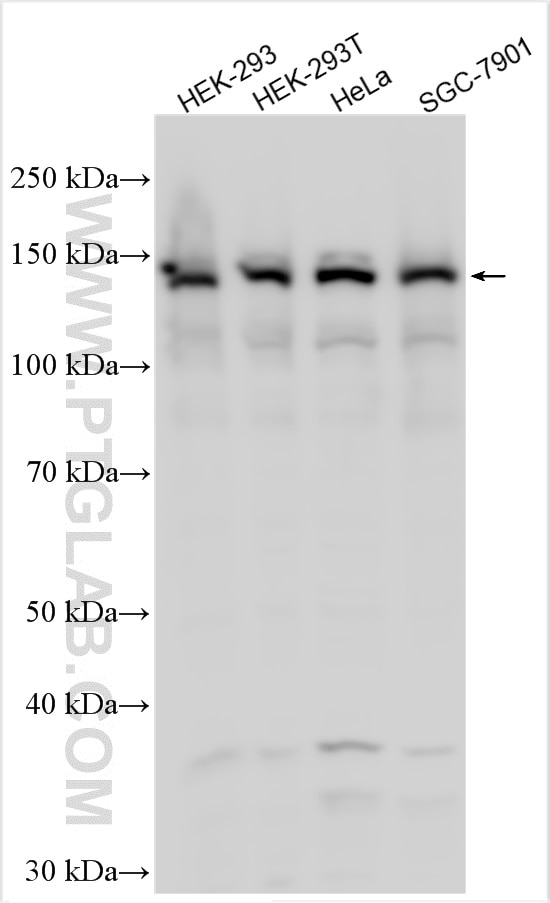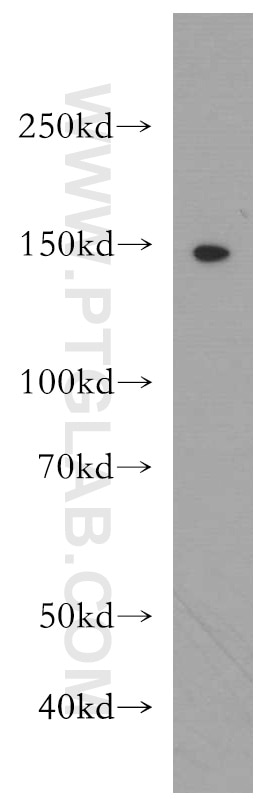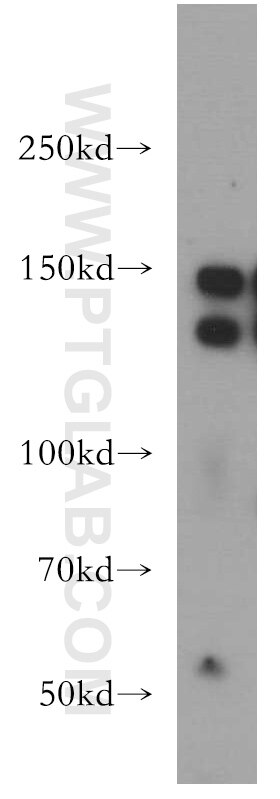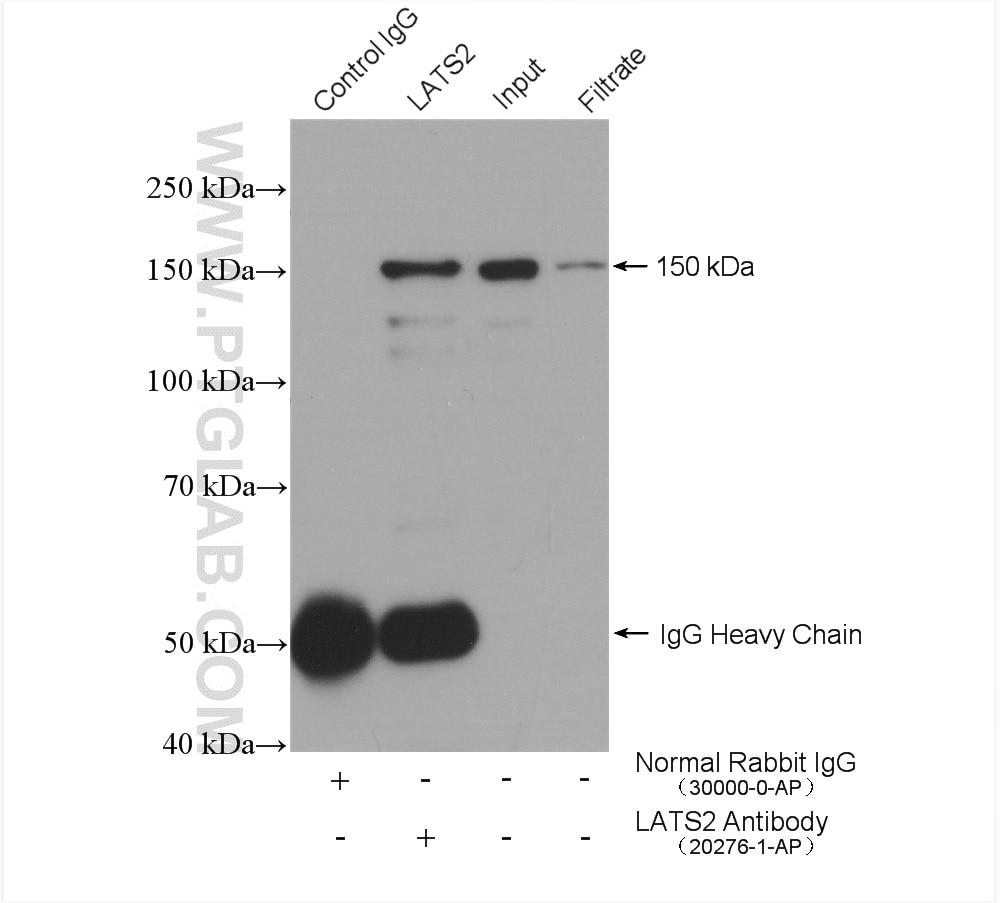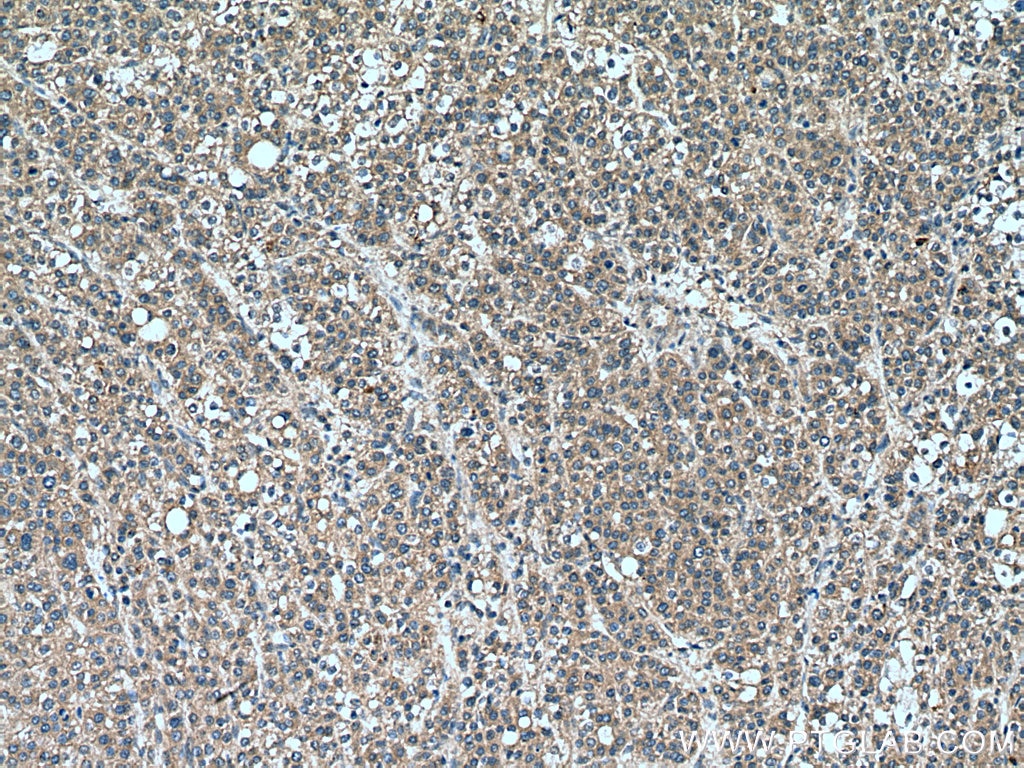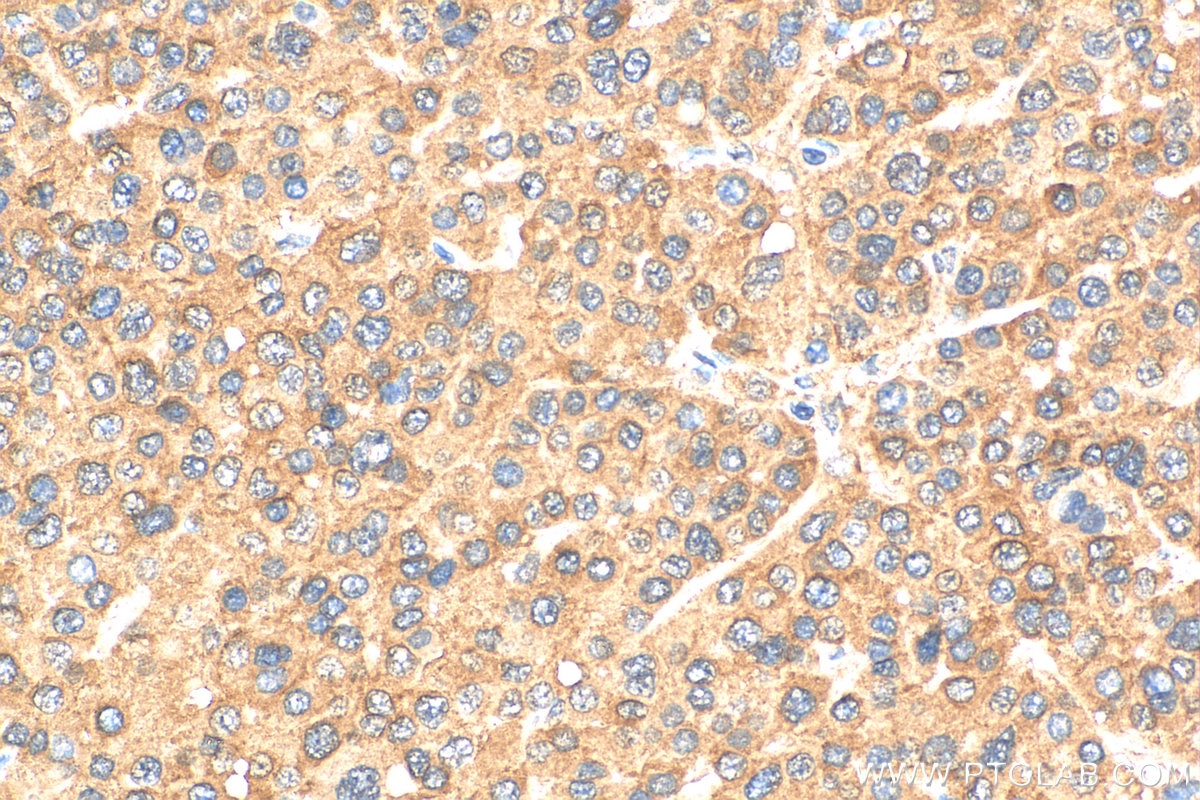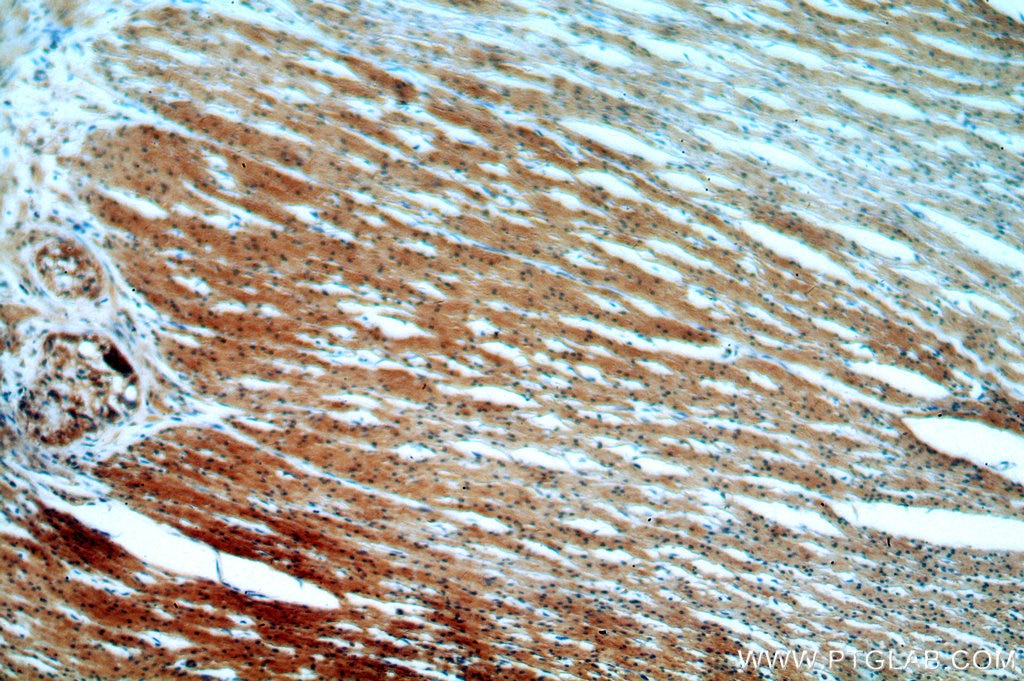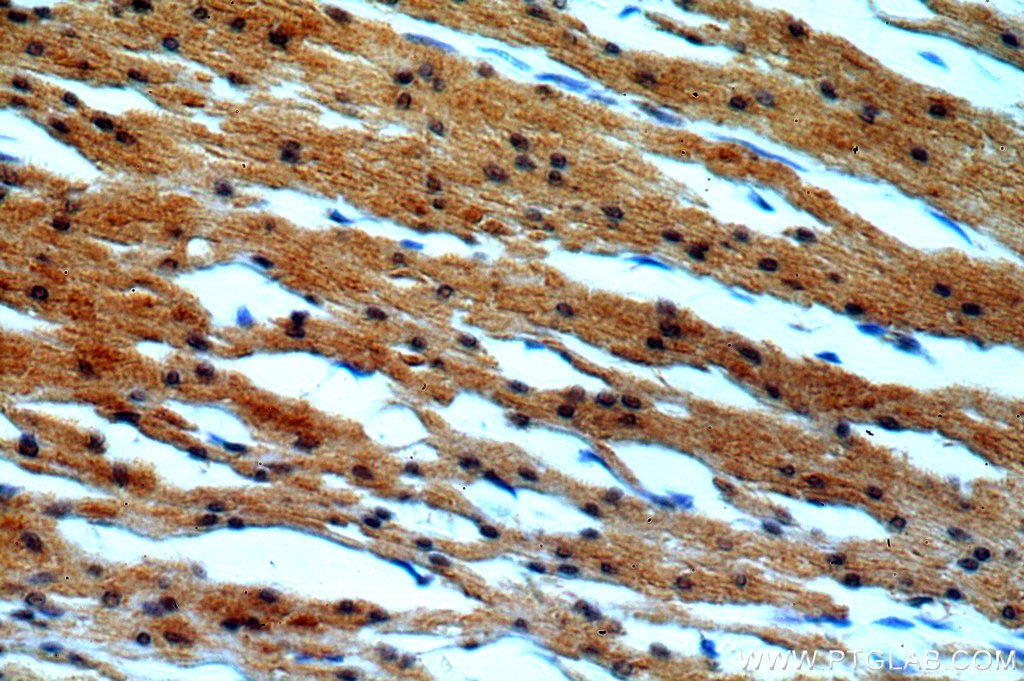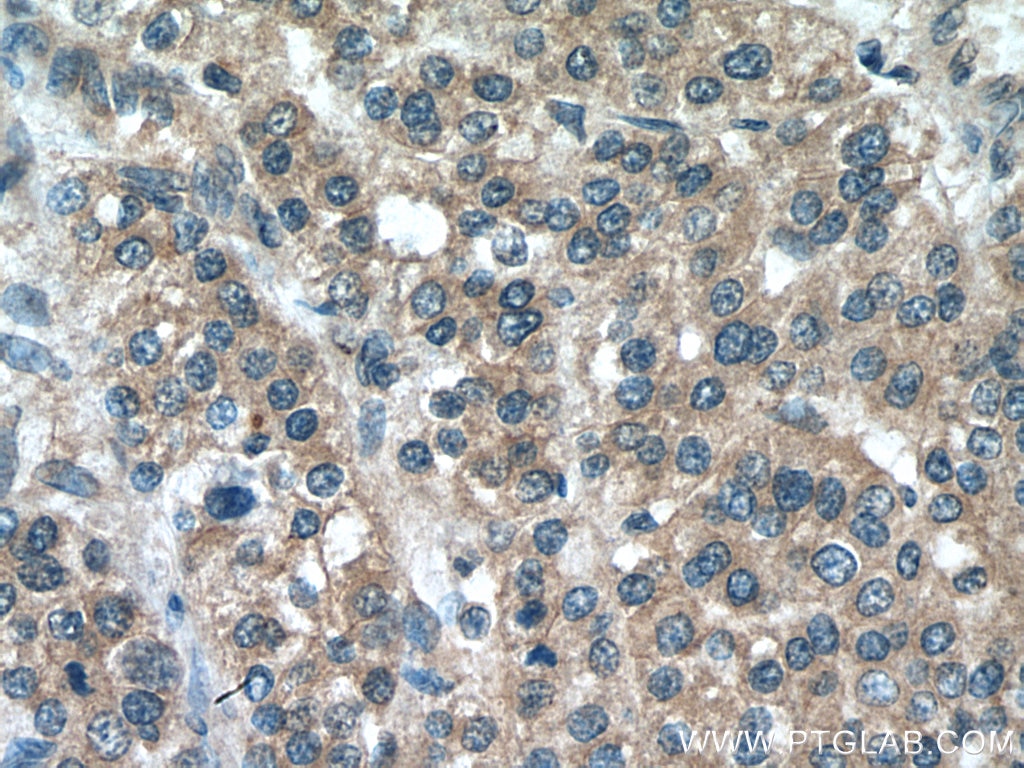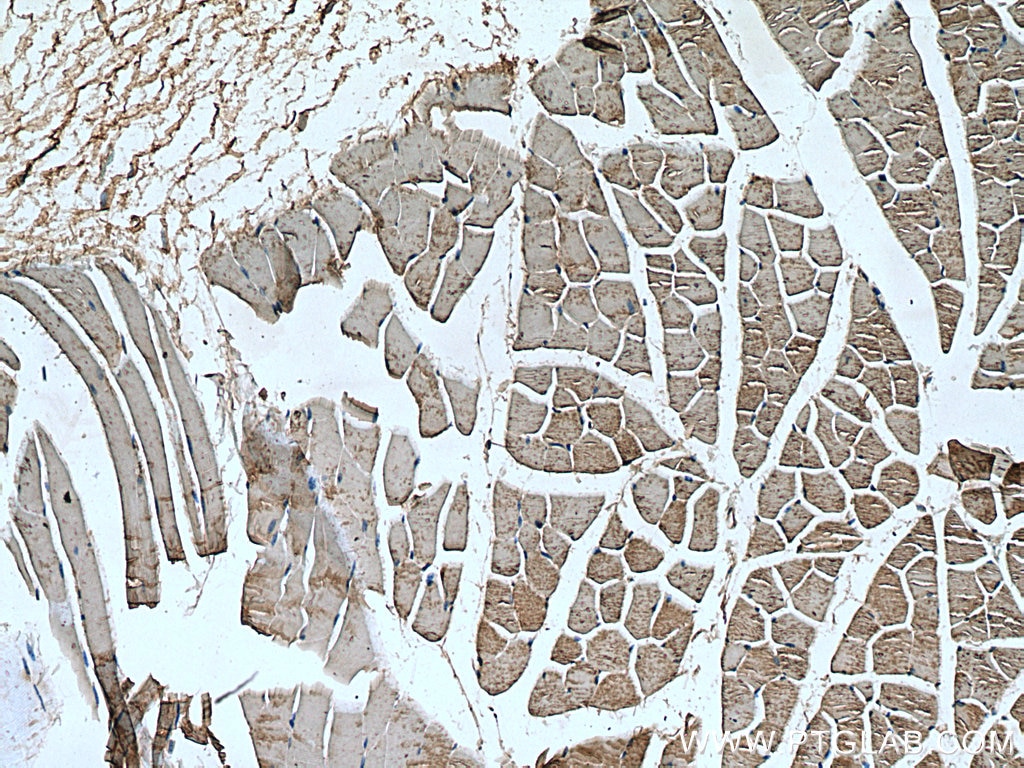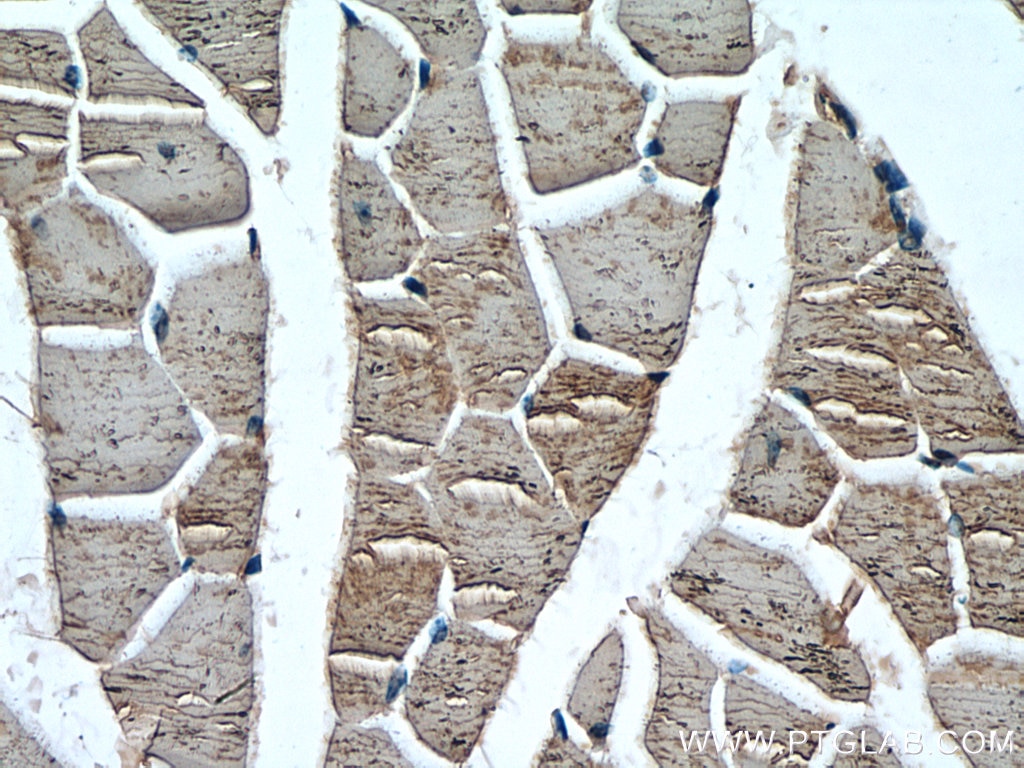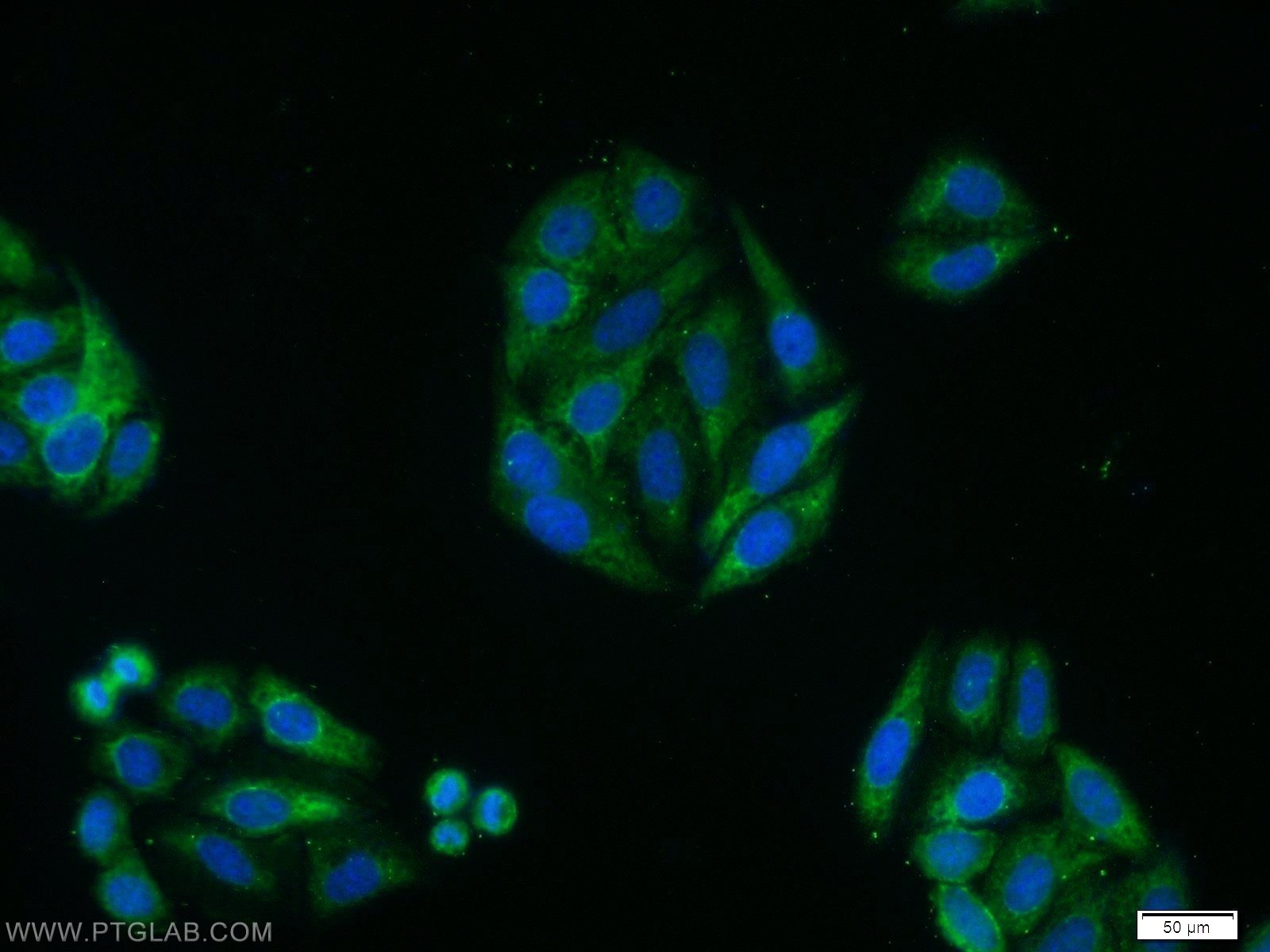Tested Applications
| Positive WB detected in | HEK-293 cells, human heart tissue |
| Positive IP detected in | HEK-293 cells |
| Positive IHC detected in | human liver cancer tissue, human colon tissue, mouse skeletal muscle tissue Note: suggested antigen retrieval with TE buffer pH 9.0; (*) Alternatively, antigen retrieval may be performed with citrate buffer pH 6.0 |
| Positive IF/ICC detected in | HepG2 cells |
Recommended dilution
| Application | Dilution |
|---|---|
| Western Blot (WB) | WB : 1:1000-1:8000 |
| Immunoprecipitation (IP) | IP : 0.5-4.0 ug for 1.0-3.0 mg of total protein lysate |
| Immunohistochemistry (IHC) | IHC : 1:50-1:500 |
| Immunofluorescence (IF)/ICC | IF/ICC : 1:20-1:200 |
| It is recommended that this reagent should be titrated in each testing system to obtain optimal results. | |
| Sample-dependent, Check data in validation data gallery. | |
Published Applications
| KD/KO | See 5 publications below |
| WB | See 35 publications below |
| IHC | See 10 publications below |
| IF | See 4 publications below |
| IP | See 1 publications below |
| CoIP | See 2 publications below |
Product Information
20276-1-AP targets LATS2-Specific in WB, IHC, IF/ICC, IP, CoIP, ELISA applications and shows reactivity with human, mouse samples.
| Tested Reactivity | human, mouse |
| Cited Reactivity | human, mouse |
| Host / Isotype | Rabbit / IgG |
| Class | Polyclonal |
| Type | Antibody |
| Immunogen |
Peptide Predict reactive species |
| Full Name | LATS, large tumor suppressor, homolog 2 (Drosophila) |
| Calculated Molecular Weight | 120 kDa |
| Observed Molecular Weight | 130-150 kDa |
| GenBank Accession Number | NM_014572 |
| Gene Symbol | LATS2 |
| Gene ID (NCBI) | 26524 |
| RRID | AB_10697657 |
| Conjugate | Unconjugated |
| Form | Liquid |
| Purification Method | Antigen affinity purification |
| UNIPROT ID | Q9NRM7 |
| Storage Buffer | PBS with 0.02% sodium azide and 50% glycerol, pH 7.3. |
| Storage Conditions | Store at -20°C. Stable for one year after shipment. Aliquoting is unnecessary for -20oC storage. 20ul sizes contain 0.1% BSA. |
Background Information
LATS2, also named as KPM, belongs to the protein kinase superfamily and AGC Ser/Thr protein kinase family. LATS2 is a tumor suppressor which plays a critical role in centrosome duplication, maintenance of mitotic fidelity and genomic stability. It negatively regulates G1/S transition by down-regulating cyclin E/CDK2 kinase activity. It is a negative regulator of the androgen receptor. LATS2 has a calculated molecular mass of 120 kDa and an apparent molecular mass of 150 kDa (PMID: 10871863). The antibody is specific to LATS2.
Protocols
| Product Specific Protocols | |
|---|---|
| IF protocol for LATS2-Specific antibody 20276-1-AP | Download protocol |
| IHC protocol for LATS2-Specific antibody 20276-1-AP | Download protocol |
| IP protocol for LATS2-Specific antibody 20276-1-AP | Download protocol |
| WB protocol for LATS2-Specific antibody 20276-1-AP | Download protocol |
| Standard Protocols | |
|---|---|
| Click here to view our Standard Protocols |
Publications
| Species | Application | Title |
|---|---|---|
Mol Cancer Co-transcriptional R-loops-mediated epigenetic regulation drives growth retardation and docetaxel chemosensitivity enhancement in advanced prostate cancer | ||
Cell Metab Cholesterol Stabilizes TAZ in Hepatocytes to Promote Experimental Non-alcoholic Steatohepatitis.
| ||
Cell Death Differ The Hippo signaling component LATS2 enhances innate immunity to inhibit HIV-1 infection through PQBP1-cGAS pathway.
| ||
Acta Pharmacol Sin Gracillin suppresses cancer progression through inducing Merlin/LATS protein-protein interaction and activating Hippo signaling pathway | ||
Clin Transl Med Tumor-derived exosomal miR-19b-3p facilitates M2 macrophage polarization and exosomal LINC00273 secretion to promote lung adenocarcinoma metastasis via Hippo pathway. | ||
Oxid Med Cell Longev miR-25 Promotes Cell Proliferation, Migration, and Invasion of Non-Small-Cell Lung Cancer by Targeting the LATS2/YAP Signaling Pathway. |

